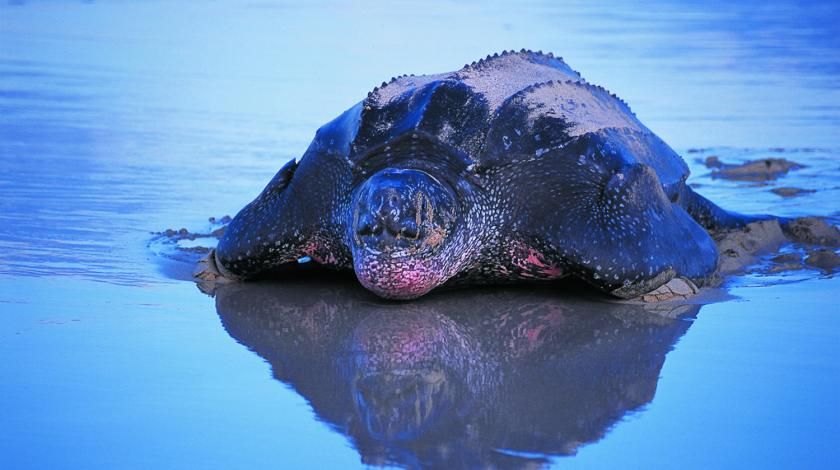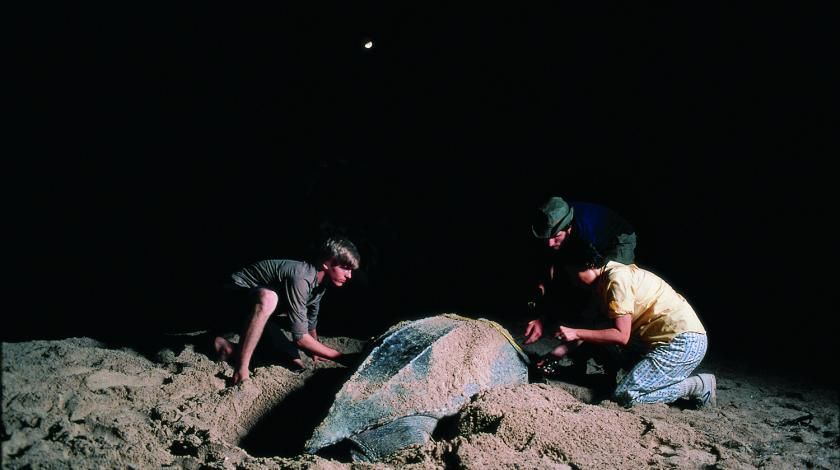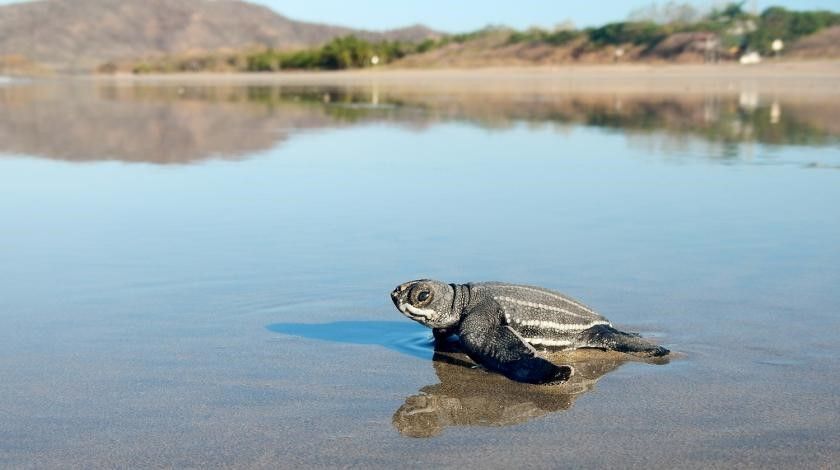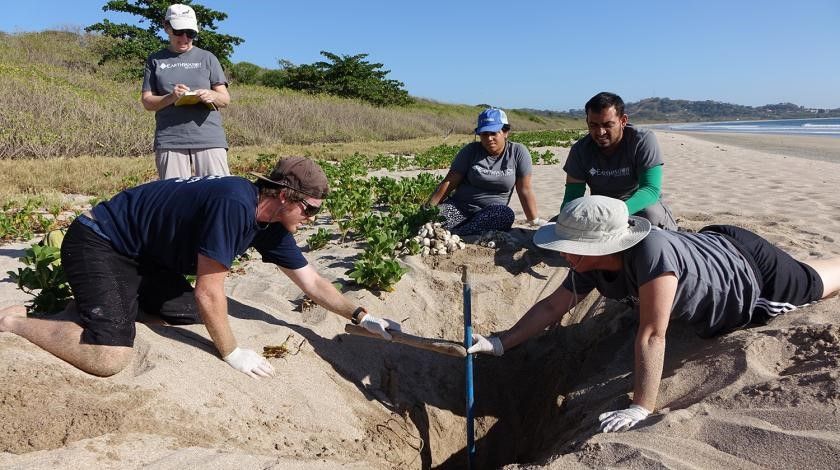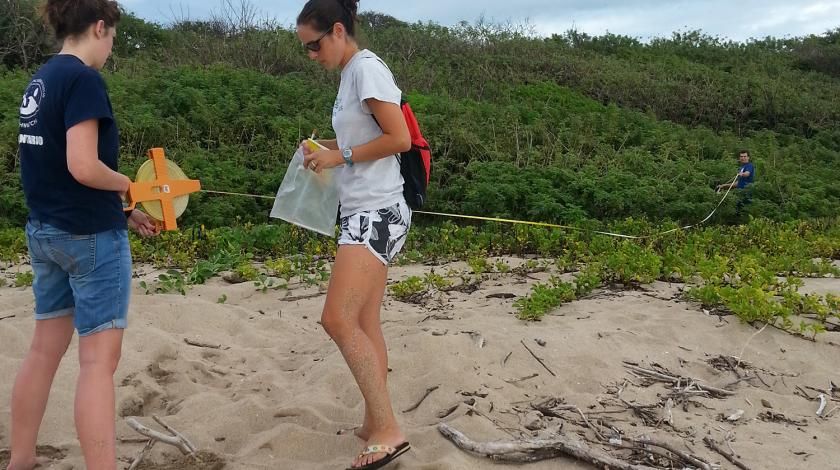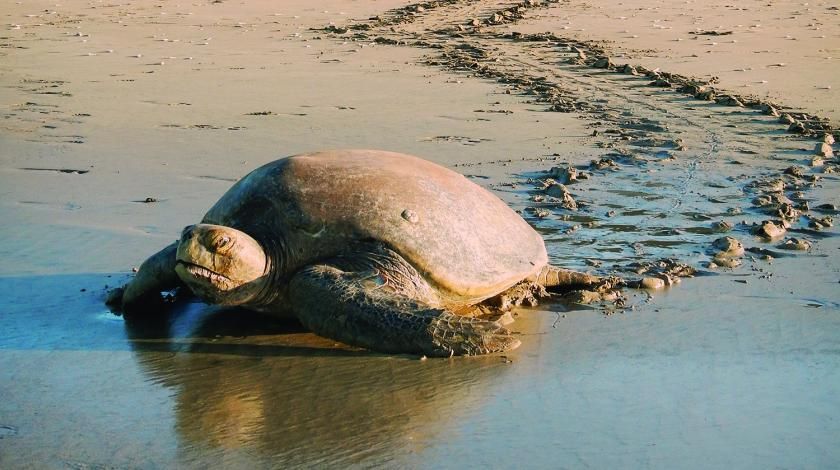Costa Rican Sea Turtles
The leatherback sea turtle population in the Pacific, once the stronghold of the species, has decreased by over 90% since 1980. Help scientists investigate this decline and look for ways to save this, and other, sea turtle species.
Costa Rica’s Guanacaste Province, Las Baulas National Marine Park, and Playa Cabuyal are home to critical nesting grounds for not only endangered leatherback sea turtles but also endangered green turtles and olive ridley turtles. On the sandy shorelines, these species haul themselves out of the ocean, dig holes with their flippers, and lay clutches of soft-shelled eggs. After a few months, fragile hatchlings will emerge and make their way to the ocean.
The world is a dangerous place for these tiny turtles and their parents. They’re threatened by climate change, boat traffic, fishing gear, coastal development, and humans hunting them for their meat and eggs. To truly understand why these ancient species have declined so rapidly and what we can do to stop this decline, researchers need to know everything about them: their behavior, physiology, genetics, population biology, and migration patterns. Subsequently, it is important to determine whether the current conservation and management efforts are working and how climate change is impacting these populations.
To build this knowledge base, you’ll walk the beach at night when turtles are active, getting up close to these massive animals to identify them and take measurements that help determine how they have changed since they were last seen. In addition, you will help collect skin samples for genetic analysis and attach transmitters that will track their local and long-distance movements. You’ll also help relocate eggs from nests in dangerous spots, like where waves might wash them away, to a hatchery. The researchers on this expedition have studied sea turtles for over three decades, and you'll help them expand the longest-running database that exists on Pacific marine turtles. This work is critical: with sea turtle populations declining at an alarming rate, each turtle is precious.
For more information or to book contact our office (03) 9016 7590 or email
Nerys Nicholls | APRIL 7, 2019 ★★★★★
"Up Close With Dinosaurs"
I thought I might be lucky to see one or two turtles in my time with the team at the Playa Grande Research Station, but I never expected to see over a dozen (not including the hundreds I was lucky to see at the Ostional arribada!). Working with a nesting leatherback is a memory that will stay with me for a lifetime. Pictures do not do these animals justice, they truly feel like living dinosaurs. Adam and Abby, along with the rest of the biologists, were super welcoming and made us feel right at home and confident during our nighttime beach patrols. The accommodation is lovely within a beautiful setting, and nothing is more rewarding after a night patrol than brunch at Kiki's Place! I've been craving the bean pizza since I left.
Ann Coles | FEBRUARY 28, 2019 ★★★★
"Challenging but highly rewarding"
Supporting the project's biologists in their efforts to save leatherback turtles from extinction was one of the most challenging, yet learning-filled and rewarding experiences I have had. I knew nothing about sea turtles when I arrived at the research station and did not appreciate how hard it would be to patrol the beach where the leatherbacks nest from 11 pm to 5 am almost every night with only a new moon and stars as light. After the first night, I wanted to return home as quickly as possible. But I am so glad I stayed! Leatherbacks are incredible, other-worldly creatures returning to the beach where they first hatched every three years to lay hundreds of eggs, and then going back to the sea without ever knowing their hatchlings. Releasing babies that fit into the palm of a hand into the sea, wondering how they will survive with a nurturing parent and yet they do. The commitment of the biologists - mostly recent college graduates - to the turtles and the research protocol also impressed me deeply. The project also had great amenities - a location on a beautiful, three-mile beach populated mostly by surfers, a gorgeous sunset every evening, good meals at a nearby cafe, internet connection, and air-conditioning in the living area. I would highly recommend the project for someone in excellent physical condition with a passion for learning and a love of the seaside.
Audrey Don | FEBRUARY 10, 2019 ★★★★★
"Costa Rican Sea Turtles - Wonder filled"
My experience far exceeded my expectations. I worried about staying up at night and not having enough sleep but the late breakfasts, eye-shades, and afternoon naps took care of that. I loved, loved, loved walking the beach whether or not there were turtles. The opportunity to be in tune with nature and watch the slow but inexorable change the tide and movement of the moon and constellations in the sky over the passage of time was magical. And then, when a turtle was sighted, turtle adrenaline took over and time was irrelevant. I remember the beginning of one patrol. We had walked one stretch, taken a break and were on the way back when we sighted a Leatherback turtle coming out of the water. We watched her start to make a nest, patrolled again, came back, took data and counted eggs, patrolled again, and then saw her trudging back into the ocean. What a privilege to experience and to be part of the effort to save these endangered turtles. It was 3 hours later when I finally noticed time again. Though it would be hard to say what I found best about the expedition, I would have to say it was being with such a passionate group of young biologists and volunteers. Walking with a biologist each night and hearing their stories, their passion for their work, and their intrepid and caring spirits was inspiring!
Veronica Johnson | FEBRUARY 27, 2018 ★★★★★
"Participating in REAL Research!"
I came into the Costa Rican Sea Turtles Expedition already passionate about sea turtles, and this trip gave me confidence that the career path is right for me! We were able to work hands-on with the nesting females and hatchlings both during the day through excavations, hatchling measurements, and morning walks and at night with nesting and hatchling releases. I was surrounded by awesome biologists and volunteers who opened my eyes to the reality of the future of sea turtles. This was an amazing opportunity to see what life is like for the dedicated biologists who study sea turtles and to listen to their advice for a student who is just starting out pursuing the same field. I was able to see all three species of turtles that nest at Playa Grande, and it made me even more excited to study sea turtles in the future, especially Leatherbacks!
-
 Activity Level: Very Active
Activity Level: Very Active -
 Location: Parque Nacional Marino Las Baulas, Guanacaste Province, Costa Rica
Location: Parque Nacional Marino Las Baulas, Guanacaste Province, Costa Rica -
 Lead Scientist:
Lead Scientist:


